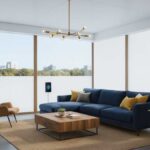As educational institutions seek to modernize their environments, switchable glass in educational institutions emerges as a revolutionary solution. This technology, which allows glass to transition from transparent to opaque with a simple switch, offers unparalleled flexibility and privacy. It enhances natural light, improves energy efficiency, and transforms classroom spaces, making it a key asset for forward-thinking schools and universities.
Applications of Switchable Glass in Educational Institutions
This innovative technology is transforming educational environments with its versatile and practical features.
Here are 10 innovative applications of this Switchable Glass in educational institutions:
Improving Classroom Functionality
This type of glass enables classrooms to transition between open and enclosed settings effortlessly. Teachers can use it to partition spaces for small group activities or private discussions by making the glass opaque. When a wider view is required for lectures or group interactions, the glass can return to its transparent state, offering flexibility and efficiency in classroom management.
Increased Energy Efficiency
One of the standout features of this technology is its contribution to energy conservation. By regulating the amount of natural light that enters a room and controlling heat gain, this smart glass reduces the reliance on artificial lighting and climate control systems. This energy efficiency not only lowers operational costs but also aligns with sustainable practices and green building standards.
Confidentiality for Students and Staff
In educational settings where confidentiality is essential, such as counseling offices or health rooms, this type of glass provides immediate discretion. It offers a modern alternative to traditional window coverings, allowing spaces to switch from transparent to opaque, ensuring sensitive conversations and consultations remain secure.
Noise Reduction Benefits
Switchable glass in educational institutions can help mitigate noise in busy areas. By providing sound insulation, it helps maintain a quieter and more focused environment, whether in hallways, study rooms, or between noisy outdoor areas and quiet indoor spaces. This noise reduction enhances the overall learning experience by minimizing distractions.
Creating Multi-functional Spaces
Modern educational facilities often require spaces that can adapt to various functions. This technology makes it possible to convert large areas into multiple smaller rooms or adjust the layout for different events. For instance, an auditorium can be divided into separate classrooms or meeting rooms using this type of glass partitions, offering flexibility for diverse academic and social activities.
Innovative Learning Stations
In science labs and creative workshops, this type of glass can create adaptable learning stations. This technology allows educators to quickly modify workspaces to suit different experiments or projects, enhancing the versatility and functionality of educational labs and studios.
Enhanced Security Features
This smart glass can add a layer of security in areas with valuable equipment or sensitive materials. When opaque, it hides these items from view, reducing the risk of theft or unauthorized access. This feature is particularly useful in high-security areas like labs or archives.
Flexible Event Spaces
Educational institutions frequently host a variety of events, from seminars to social gatherings. Switchable glass in educational institutions allows for quick reconfiguration of these spaces. By adjusting the opacity of glass panels, institutions can easily transform large event areas into more intimate settings or vice versa, accommodating different needs with ease.
Optimized Classroom Lighting
Managing lighting conditions is crucial in creating an ideal learning environment. This type of glass helps control the amount of sunlight entering classrooms, reducing glare and optimizing visibility. This feature enhances the comfort and focus of students by providing the right lighting conditions throughout the day.
Aesthetic Advantages
Beyond its functional benefits, this smart glass adds a contemporary touch to educational facilities. Its sleek, minimalist design enhances the visual appeal of classrooms, libraries, and administrative offices. This modern look not only complements the architectural style but also contributes to a more attractive and engaging learning environment.
How to Choose the Best Switchable Glass in Educational Institutions
When selecting switchable glass for schools or universities, several factors need to be considered to ensure it meets the institution’s specific needs.
Below are key points to guide the decision-making process:
- Assess the Purpose of the Space: Identify if the glass is needed for privacy, noise reduction, or energy efficiency to choose the most suitable type.
- Consider the Type of Switchable Glass: Choose between electrochromic or SPD glass based on the required functionality and control preferences.
- Evaluate Durability and Maintenance Needs: Opt for glass that is durable and low-maintenance, particularly in high-traffic areas like classrooms or hallways.
- Energy Efficiency Features: Prioritize glass with excellent insulation properties to reduce energy consumption and support sustainability initiatives.
- Budget and Cost Efficiency: Balance initial costs with long-term benefits such as energy savings and reduced reliance on traditional coverings like blinds or curtains.
- Safety Standards and Certifications: Ensure the glass meets safety regulations for educational use, including shatter resistance and compliance with fire safety standards.
Conclusion
Switchable glass is a game-changer for educational institutions, offering flexibility, energy efficiency, and aesthetic appeal. Whether it’s enhancing classroom functionality, ensuring privacy, or creating multi-functional spaces, switchable glass provides a versatile solution for modern educational environments. As technology continues to advance, we can expect to see even broader adoption of this innovative glass in schools and universities worldwide.
FAQs
What is the cost of installing switchable glass in schools?
The cost varies based on the type of glass and the installation size but can be higher than standard glass. However, the energy savings can offset the initial investment over time.
How durable is switchable glass in high-traffic areas?
It is designed to be durable, but it may require more maintenance in high-traffic areas due to potential scratches or wear.
Does switchable glass require a lot of maintenance?
Generally, the glass is low-maintenance, but regular cleaning and occasional servicing of the electrical components may be necessary.
Can switchable glass improve student focus in the classroom?
Yes, by reducing distractions from outside and controlling the lighting environment, this glass can help improve focus.
Is switchable glass safe for use in educational environments?
Absolutely. It is designed with safety in mind and meets the necessary safety standards for use in schools and universities.





